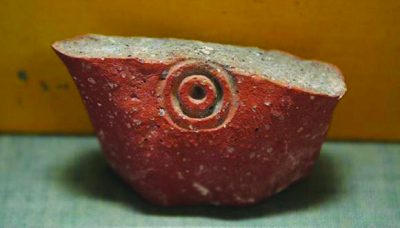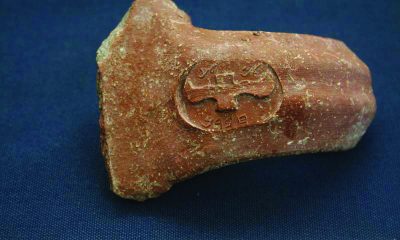×


We have detected your country as:
Please click here to go to the USA website or select another country from the dropdown list.
 Albert Einstein considered the origin of the earth’s magnetic field one of the five most important unsolved problems in physics. The weakening of the geomagnetic field which extends from the planet’s core into outer space and was first recorded 180 years ago has raised concern by some for the welfare of the biosphere.
Albert Einstein considered the origin of the earth’s magnetic field one of the five most important unsolved problems in physics. The weakening of the geomagnetic field which extends from the planet’s core into outer space and was first recorded 180 years ago has raised concern by some for the welfare of the biosphere.
But a new study published in PNAS from Tel Aviv University, Hebrew University of Jerusalem and University of California San Diego researchers finds there is no reason for alarm: The earth’s geomagnetic field has been undulating for thousands of years. Data obtained from the analysis of well-dated Judean jar handles provide information on changes in the strength of the geomagnetic field between the 8th and 2nd centuries BC, indicating a fluctuating field that peaked during the 8th century BC.
 Dr. Erez Ben-Yosef of TAU’s Institute of Archaeology, the study’s lead investigator, reports: “This new finding puts the recent decline in the field’s strength into context. Apparently, this is not a unique phenomenon—the field has often weakened and recovered over the last millennia.”
Dr. Erez Ben-Yosef of TAU’s Institute of Archaeology, the study’s lead investigator, reports: “This new finding puts the recent decline in the field’s strength into context. Apparently, this is not a unique phenomenon—the field has often weakened and recovered over the last millennia.”
“We can gain a clearer picture of the planet and its inner structure by better understanding proxies like the magnetic field which reaches more than 1,800 miles deep into the liquid part of the Earth’s outer core,” Dr. Ben-Yosef observes.
The new research is based on a set of 67 ancient, heat-impacted Judean ceramic storage jar handles which bear royal stamp impressions from the 8th to 2nd century BC, providing accurate age estimates.
“The period spanned by the jars allowed us to procure data on the earth’s magnetic field during that time — the Iron Age through the Hellenistic Period in Judea,” says Dr. Ben-Yosef. “The typology of the stamp impressions which correspond to changes in the political entities ruling this area provides excellent age estimates for the firing of these artifacts.”
Observed changes in the geomagnetic field can, in turn, be used as an advanced dating method complementary to the radiocarbon dating, according to Dr. Ben-Yosef. “Both archaeologists and earth scientists benefit from this. The new data can improve geophysical models as well as provide an excellent, accurate dating reference for archaeological artifacts.”
Source: Excerpt of article by the Ministry of Foreign Affairs
Photo Credit: english.tau.ac.il / Oded Lipschits
All logos and trademarks in this site are property of their respective owner. All other materials are property of Bridges for Peace. Copyright © 2025.
Website Site Design by J-Town Internet Services Ltd. - Based in Jerusalem and Serving the World.